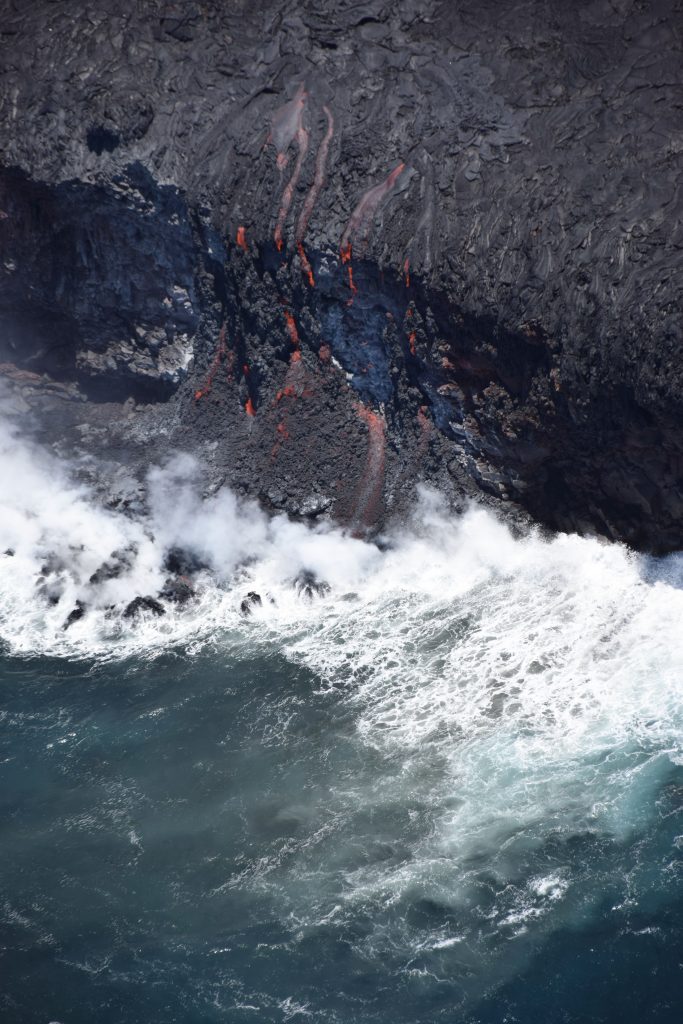Beware “Perilous Beauty” of Lava Entry into Ocean

Less than 24 hours after first reaching the sea in the early morning hours of July 26, lava spilling over the sea cliff and into the ocean had started building a foundation of loose lava fragments on which a new lava delta can form. Lava deltas are extremely dangerous because they can collapse into the ocean without warning, triggering explosions that hurl rocks on and off shore, and sending waves of scalding water onto the coast. The area of active lava pouring over this sea cliff is about 20 m (66 ft) wide and the cliff is about 20 m (66 ft) high. USGS photo.
Lava erupting from the Puʻu ʻŌʻō vent entered the ocean along Kīlauea Volcano’s south coast this past week for the first time since 2013—perhaps the beginning of a new sustained lava entry that will add new land to the Island of Hawaiʻi.
With thousands of visitors eager to visit site, scientists with the Hawaiian Volcano Observatory are warning the public to be aware of the “perilous beauty” and the unique set of hazards that exist.
Four main hazards associated with lava flowing into the ocean include the sudden collapse of new land and adjacent sea cliffs into the ocean, explosions triggered by the collapse, waves of scalding hot water washing onshore, and a steam plume that rains hydrochloric acid and tiny volcanic glass particles downwind from the entry point.
In 1993, a large delta collapse swept one photographer out to sea and more than a dozen other people were also injured when they attempted to flee the hot rocks and lava fragments hurled onshore. In 2000, two individuals died from inhalation of acidic steam from a separate lava ocean entry point.
“During a collapse, hot rocks, molten lava within tubes, and/or surface lava flows instantly come into contact with seawater. With temperatures higher than 1,100 degrees Celsius (2,012 degrees Fahrenheit), active lava causes seawater to flash to steam, which triggers an explosive blast of rocks, steam, and molten lava fragments into the air,” according to the Hawaiian Volcano Observatory.
“The largest of these explosions have hurled rocks nearly a meter (yard) in size as far as about 300 m (330 yards) inland from the collapsed delta and have scattered rock debris over areas the size of several football fields,” the agency reports.
Scientists cannot predict the timing or size of a delta collapse, or the exact direction or distance that rocks will be hurled during a collapse-triggered explosion.
According to the HVO, the best way to avoid these hazards is to never walk onto an active lava delta, and, once a new lava delta extends a few tens of meters (yards) from the old sea cliff, stay at least 400 m (one-quarter mile) away from where lava enters the sea. Small rock fragments can even fall beyond this distance during large explosions triggered by lava delta collapse.










